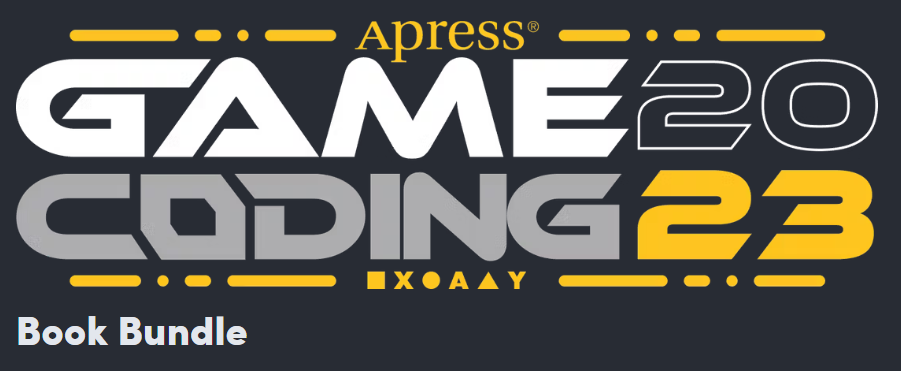Name: Humble Tech Book Bundle: Game Coding 2023 by APress
Website: Humble Bundle
Price: $17.88 USD
Expiry Date: Sept 11, 2023
Introduction
This Humble book bundle is a 19 e-book bundle from APress covering Game Design with Unity, GameMaker, Godot and more. Read below for details on what’s included, what each book covers, and my recommendation as to whether or not this is a worthwhile purchase.
The books are delivered in both epub and pdf formats for download to your favorite device / e-book reading app.
This bundle is available until Sept 11, 2023, so you have only a few days to purchase it, so let’s get started with the review.
What’s Included
I’ve set up links to each review from the tier list, to make it easier to read about the specific book that you want to find more about. Just click on the link to go to the part of the review about that book.
This bundle has 3 tiers:
Tier 1: 2 Items – $1 USD
Tier 2: 5 Items + All items in Tier 1 – $10 USD
- Procedural Generation in Godot
- Introduction to Video Game Engine Development
- Human-Computer Interaction in Game Development with Python
- Exploring Game Mechanics
- Advanced Unity Game Development
Tier 3: 12 Items + All Items in Tier 1 and 2 – $17.88 USD
- Unity Virtual Reality Development with VRTK4
- Introduction to Unity ML-Agents
- Build Your Own 2D Game Engine and Create Great Web Games
- Beginning Game Development with Godot
- Learn JavaFX Game and App Development
- GameMaker Fundamentals
- How to Make a Game
- Game Development with MonoGame
- Building Multiplayer Games in Unity
- Beginning 3D Game Assets Development Pipeline
- Sound and Music for Games
- The Way We Play
Book Details
In this section, I will go over what each book is about and a quick review of the book. Keep in mind I have not read the entire contents of all these books as that would take a long time and the bundle would be over by that time. So this will be a quick assessment of whether I think the book is worthwhile or not.
I have categorized the 19 books into three categories: General game design, Unity, Godot, Java, and Other. All of the books have been published in 2022, so these are all relatively new books from APress.
General Game Design Books
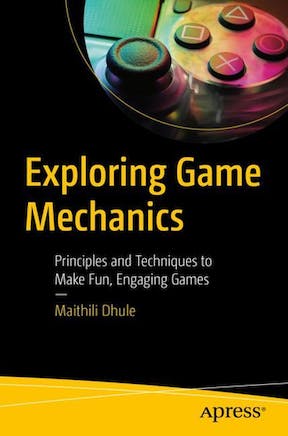
Title: Exploring Game Mechanics
Author: Maithili Dhule
205 Pages.
Overview: This book explores the game mechanics and player psychology in many popular games over 5 chapters. It covers such topics as creating fun gameplay, player progression, enemy design, and choosing game mechanics.
Opinion: The book is quite interesting, although it is quite short. It seems to end abruptly after chapter 5, so I have to wonder if it was supposed to be longer, it would probably be better if they had more chapters, but I still like the book, it is helpful in giving the reader a lot of ideas to think about when creating their own games.

Title: How to Make a Game
Author: Minhaz-Us-Salakeen Fahme, Tanimul Haque Khan
291 Pages.
Overview: The book about how to make a game starts out by naming chapter 1 “Don’t”. I think it’s a joke because the chapter is not telling you not to bother making a game at all. It is telling you to don’t do it if you don’t enjoy it, which I agree with. In any case, the book says it is there to show you everything you need to know to make your own indie game studio, and covers topics like writing a game design document, how to use Git, structuring your projects, code patterns, good coding practices, game feels, input, testing and publishing.
Opinion: It actually covers a lot of topics in less than 300 pages, and it seems like a book I will enjoy reading. Some of the chapter names are quite humorous, and unlike the exploring game mechanics book, this book does seem to have an ending. Some of the topics are not things I have seen in a lot of tutorials, either, such as “game feels”.

Title: The Way We Play
Author: Michael Killick
238 Pages.
Overview: This book covers the history of video games, video game industry, game design, enemy and level design, game mechanics, and HUD and UI. For some reason, it also includes a tutorial on Unity first person controller and a tutorial on Unity 2D Platformers.
Opinion: The inclusion of the 2 chapters which are Unity tutorials seems out of place to me. The book is supposed to be a general game design book which should be engine agnostic, and yet there are 2 chapters of Unity tutorials. However, the book is worth it to read nonetheless.
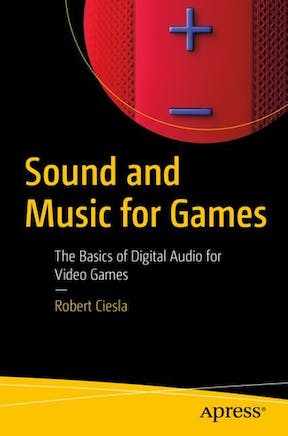
Title: Sound and Music for Games
Author: Robert Ciesla
289 Pages.
Overview: This book is a very technical overview of sound and music for video games. It covers the fundamentals of digital audio, audio hardware, manipulating audio, digital audio workstations, voice acting, MIDI and Composing, Chiptunes, Audio solutions for Video Games, and a chapter on Selling and licensing.
Opinion: The book at a glance seems to have a technical deep dive on audio formats and how it all works. This might be too much detail for the average indie developer, as game engines like Unity do not require such deep knowledge, but it could be useful at some point in a developer’s career to know how it works. I may read this book at some point, but it’s not high on my priority list.
Unity Books
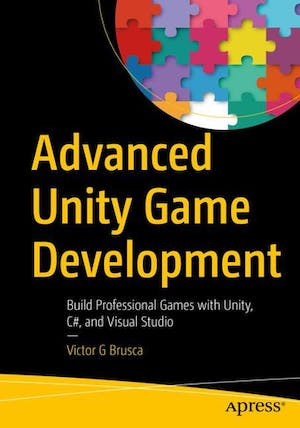
Title: Advanced Unity Game Development
Author: Victor G Brusca
363 Pages.
Overview: This book goes through the development of a complete game in Unity, Hover Racers. It guides the reader through the game design, classes, interaction, menus, sound, UI, cameras, lighting and AI opponents.
Opinion: Unlike most Unity tutorials which do not leave you with a full game and only cover creating a main scene of a game, this book guides you through creating a full playable game complete with menus, UI, and sound. I appreciate this, as I believe more tutorials should cover creating a full game, I have seen too many tutorials that purport to teach you to create a game and what you are left with is how to create a scene, but with no way to publish it as a fully playable game with game states and menus, and all the things a full game has. I am looking forward to going through this book and seeing how it turns out.
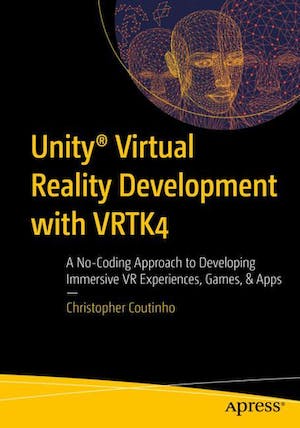
Title: Unity Virtual Reality Development with VRTK4
Author: Christopher Coutinho
410 Pages.
Overview: This book covers creating VR experiences with Unity using the Virtual Reality Toolkit version 4. The book follows a no-code approach to creating experiences that allow you to teleport, interact with game objects, arm swining, distance grabbing, climbing, 3D UI objects, and more.
Opinion: Following this book requires having an Oculus Rift, Rift S, Quest or an HTC Vive headset. I do not have any of those, so I won’t be able to follow along with the book. I am always interested in no-code approaches to game development, though, so this book is good if you are interested in implementing VR experiences in Unity. The book does not cover creating any specific game, but rather focuses on teaching you how to implement different VR mechanics that you could then implement into your own games.

Title: Introduction to Unity ML-Agents
Author: Dylan Engelbrecht
213 Pages.
Overview: This book covers creating Machine learning agents in Unity and PyTorch, an open source Python machine learning framework. It covers setting ML-Agents up, and how to use it to create AI agents in Unity.
Opinion: The topic is interesting, so I will probably read this, but the book cautions that a 32-64 MB of RAM machine is recommended, so I probably won’t be able to follow along with the book, so beware of that. Also the book is rather short, just showing the basics of how to set ML-Agents up and how to use it. The book ends with a challenge to the reader with a link to the author’s solution. The book would have been better served if there was a chapter explaining the author’s solution.
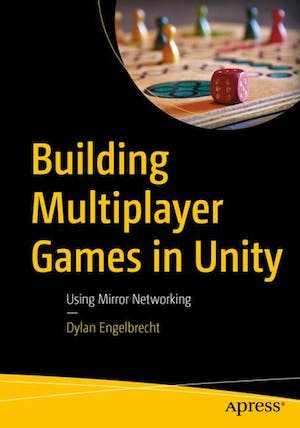
Title: Building Multiplayer Games in Unity
Author: Dylan Engelbrecht
244 Pages.
Overview: This book covers how to create multiplayer games in Unity using Mirror Networking. The topics covered are how networking works, how to set up Mirror, how Mirror works, game server architecture, connecting to databases, and scaling up. There is also a chapter with interviews with the founder of Mirror Networking as well as an industry veteran who is a senior solutions architect. The book finishes with a chapter of challenges, five challenges to the reader to implement various networking scenarios in games.
Opinion: This is definitely a topic I am interested in, and I will read the book. I think the book is aimed at more advanced Unity developers because there isn’t a lot of hand holding here, there is an explanation of how things work, some guidance as to how to set things up, and then challenges to the reader to implement what they have learned. This isn’t a bad thing, it’s not a beginner book, so I look forward to following this and trying the challenges myself.
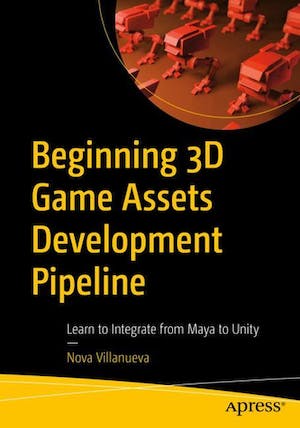
Title: Beginning 3D Game Assets Development Pipeline
Author: Nova Villanueva
329 Pages.
Overview: This book is about using Maya to create game assets for Unity. It covers modeling, texturing, rigging, and animating models in Maya, and covers how to get those into Unity.
Opinion: This book is mostly a Maya book, with importing to Unity covered at the end. It’s not really that interesting to me, although there are some concepts with modeling such as proper topology that are universal and could be useful for other applications such as Blender.
Godot Books
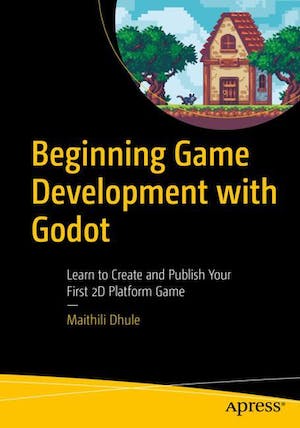
Title: Beginning Game Development with Godot
Author: Maithili Dhule
372 Pages.
Overview: This book teaches you how to create 2D games with Godot, specifically a 2D platformer is created by following the book. Also topics on how to publish and monetize your games is included.
Opinion: This seems like a good fundamentals book, teaching the basics of the Godot engine, I will probably read it as Godot is a popular engine. This book seems interesting, although the promised segment about monetizing your games is a bit short and light, I would have liked more detail.
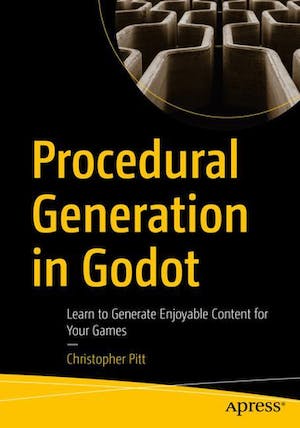
Title: Procedural Generation in Godot
Author: Christopher Pitt
257 Pages.
Overview: This game covers creating procedural content using different strategies in Godot. It also includes recreating several games along the way to apply this knowledge.
Opinion: This book seems like a great follow-up to the Beginning Game Development with Godot which is also included in this bundle. It creates several games as you follow along with it, and ends up by challenging the reader to recreate “This War of Mine”, and tells us we can do it, which seems interesting to me, I want to read the book and find out if I could really recreate that after reading this book.
Java Books
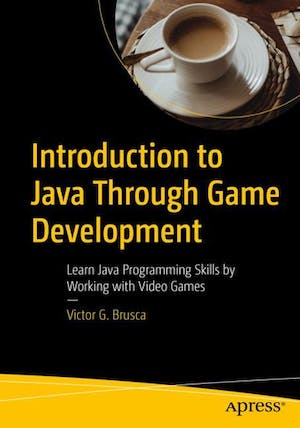
Title: Introduction to Java Through Game Development
Author: Victor G. Brusca
256 Pages.
Overview: This book teaches you the Java programming language and uses examples from three 2D games projects that use a proprietary open source game engine. The reader works through challenges to make changes to the included games as part of learning Java.
Opinion: If you’re going to learn a new language, it’s always more fun to learn to make video games. Be aware, though, that you do not make games from scratch in this book. You are modifying existing games through challenges in order to learn Java. The book introduces a topic such as Variables, Looping, Data Structures, and then challenges the reader to fix a problem or implement a feature in one of three included games.
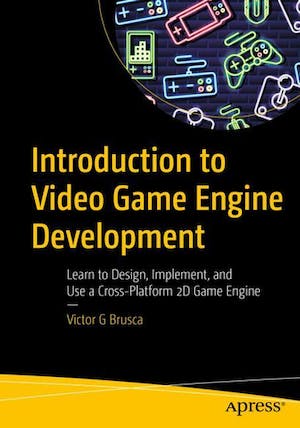
Title: Introduction to Video Game Engine Development
Author: Victor G. Brusca
391 Pages.
Overview: This book covers how the Mmg game engine is developed, and gives a detailed overview of how the code works. Then it follows up with creating a pong clone with the engine.
Opinion: This book uses the same engine as the Introduction to Java through Game development book uses, so this is a companion to that showing how that engine is implemented. The reader can follow along with either Java or C#. The book ends with implementing a PongClone game from scratch. It also promises to make the DungeonTrap game as well, but then the book ends , so it seems like a chapter is missing. It says the DungeonTrap build is available on the book’s Github page, but I couldn’t get to that page because you have to first to to the book’s APress website, and it wouldn’t load for me at time of writing. They should have made it a chapter in the book in my opinion. Or at least have a direct link to the Github repo.
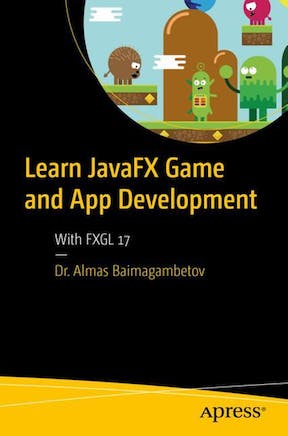
Title: Learn JavaFX Game and App Development
Author: Dr. Almas Baimagambetov
228 Pages.
Overview: This book covers how to create games using the FXGL game engine using JavaFX. Three games are created, Pong, a platformer game, and a maze action game, as well as a solar system application.
Opinion: This seems like an interesting book to follow, if you’re interested in making games in Java. Three games are made and an application, the book is a short and concise introduction to the topic.
Other Books

Title: Beginning VFX with Autodesk Maya – Create Industry Standard Visual Effects from Scratch
Author: Abhishek Kumar
389 Pages.
Overview: Covers how to make visual FX with Maya, including nParticle FX, Rigid and Soft body systems, Maya Fluids, Cloth and Hair simulation, integrating real-life footage, and Bifrost simulation (large bodies of water effects). It also has a chapter on the history of Visual FX.
Opinion: I am not a Maya user, so mostly this book is not in my area of interest. However, the chapter on the history of visual FX is worth reading. I’m not sure how relevant this book is to Game Coding, though, it seems like it doesn’t belong with the rest of the books, although I suppose creating cutscenes in Maya is what they are aiming for in relation to video games. Although, if that was the case, they could have included a chapter on how to produce a cutscene animation in Maya. I will read the first 3 chapters though. One note, the epub version is over 200 MB for some reason, and the PDF is only 24 MB.
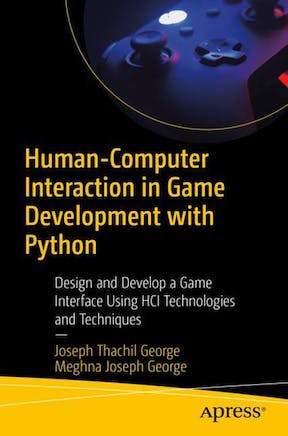
Title: Human-Computer Interaction in Game Development with Python
Author: Joseph Thachil George, Meghna Joseph George
335 Pages.
Overview: This book covers the topic of human-computer interaction in games. It gives an overview of HCI technologies, game development, industry standards, gamification, research and development, and includes a chapter on developing a video game in Python with Pygame.
Opinion: The book is really a general book about human-computer interaction, with a chapter on Pygame inserted in the middle. I’m not sure why this was done, it really seems out of place with the rest of the content. I like Pygame and will likely follow that tutorial at some point, but why is it there? It makes no sense to me to shoehorn in that chapter.

Title: Build Your Own 2D Game Engine and Create Great Web Games
Author: Kelvin Sung, Jebediah Pavleas, Matthew Munson, Jason Pace
757 Pages.
Overview: This book covers how to create a game engine using JavaScript, HTML5 and WebGL. Topics covered are drawing objects, working with textures and sprites, detecting collisions, manipulating the camera, physics simulation, particle systems, and illumination and shadow. It also has a chapter on creating a sample game based on the engine created in the book and guides the reader in making that game.
Opinion: This book is a whopping 757 pages long. It will be interesting to anyone who wants to learn what is involved in creating a 2D game engine using JavaScript and WebGL. I would probably go through the book at some point, but because I’m focusing on Unity right now, this will be on the back burner for me. I’m not sure how many people are creating their own game engines when there are so many good game engines to use for free already.

Title: GameMaker Fundamentals
Author: Ben Tyers
416 Pages.
Overview: This book covers how to use GameMaker and make a game, and challenges the reader with programming challenges to implement features in that game.
Opinion: This book is rather confusing, it’s called “GameMaker Fundamentals” but it doesn’t teach me how to install and use GameMaker until the last appendix in the book. Rather, each chapter covers a concept such as Variables, Conditionals, Drawing, etc. in GameMaker. Only when we get to the first appendix do we attempt to make a game. This seems odd to me. The concept chapters have challenges to the reader as well. But seeing as the reader has never before used GameMaker and hasn’t learned how to install it yet unless they look at the back of the book, I don’t know how successful a beginner would be in completing the challenges. I will pass on this book.

Title: Game Development with MonoGame
Author: Louis Salin, Rami Morrar
208 Pages.
Overview: This book is a sequel to MonoGame Mastery, and you should have read that book first. It covers improving the game made in the previous book and also creating a 2D platformer that uses a texture shader and particle engine.
Opinion: I had to look up what MonoGame was because the book doesn’t really tell me, as it expects I have read the previous book, MonoGame Mastery. Which I haven’t. Apparently MonoGame is an open source C# framework that re-implements Microsoft’s now defunct XNA framework. I used to use XNA a long time ago, and there was a course about it on 3DBuzz (RIP Jason Busby), and I enjoyed XNA, so MonoGame might be a good thing to try at some point, but I would probably try and get the first book and read that first. Until then, I’ll pass.
Conclusion
My top three books in this bundle:
- How to Make a Game
- Advanced Unity Game Development
- Building Multiplayer Games in Unity
As a Unity developer, the bundle has a few Unity books and a couple of others that have Unity content, although two of them are Maya books, so I probably wouldn’t read it, as I use Blender and not Maya. But you might use Maya so it would be worth it for you.
The general game design books are also worth it, as they do cover topics like game design documents and best practices for game architecture, which are universal to any game engine.
If you think even one of these books is worth your while, this bundle is worth it, as there are many books included that cover a wide variety of game topics. The bundle also supports the Direct Relief charity, so your money is going to a good cause as well.
So I would recommend buying this bundle, and I have bought it myself and plan to read through most of the books.
To get this bundle, click here.
Disclosure: I may earn a small commission if you purchase it with my affiliate link, but I do not recommend products I haven’t tried myself and only recommend things that I think are a good purchase.
